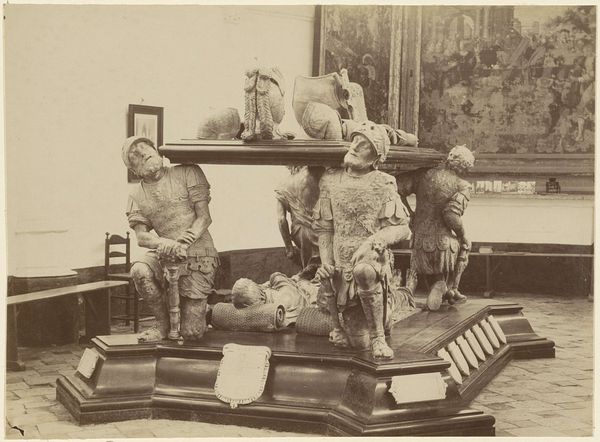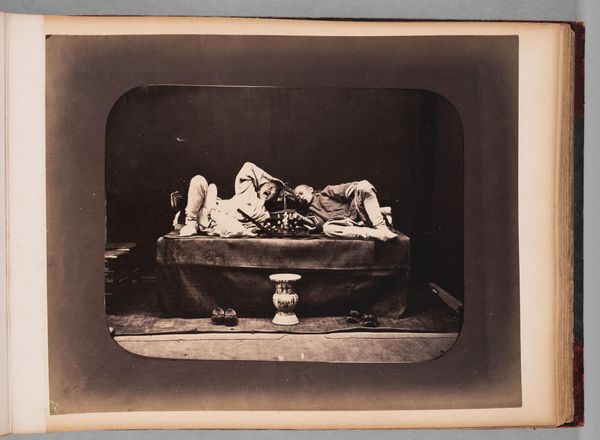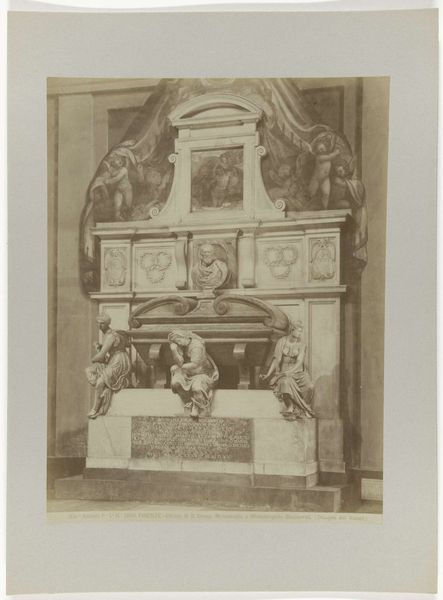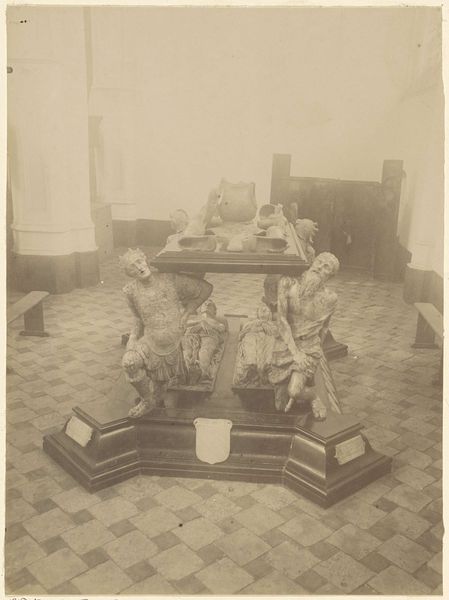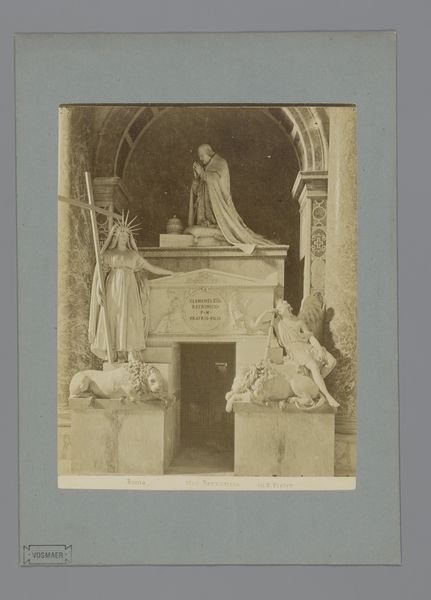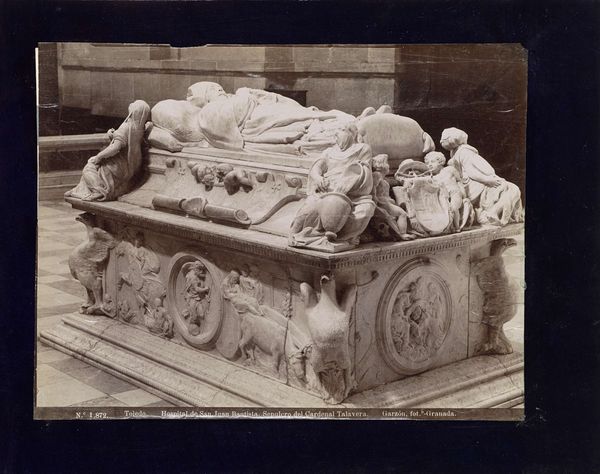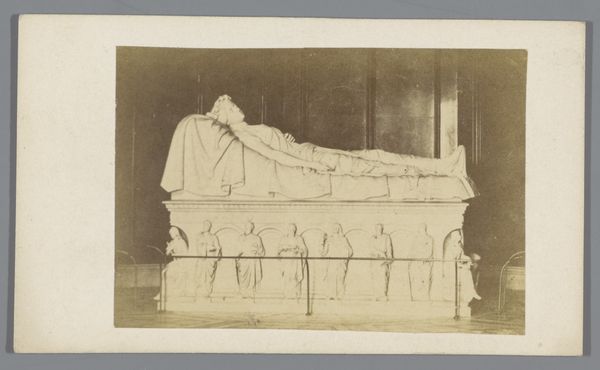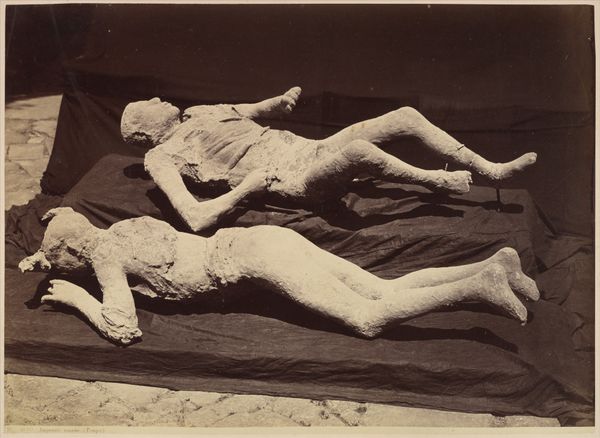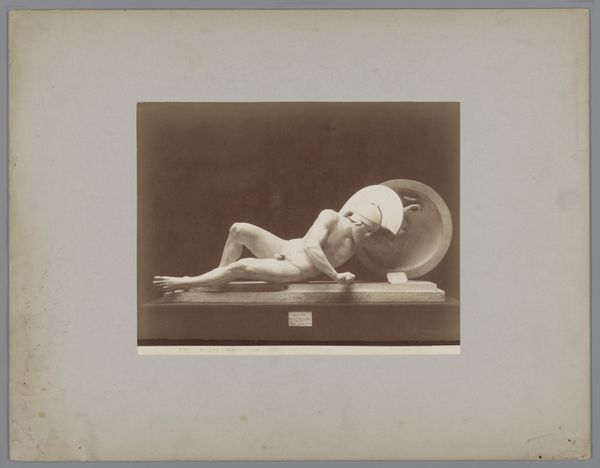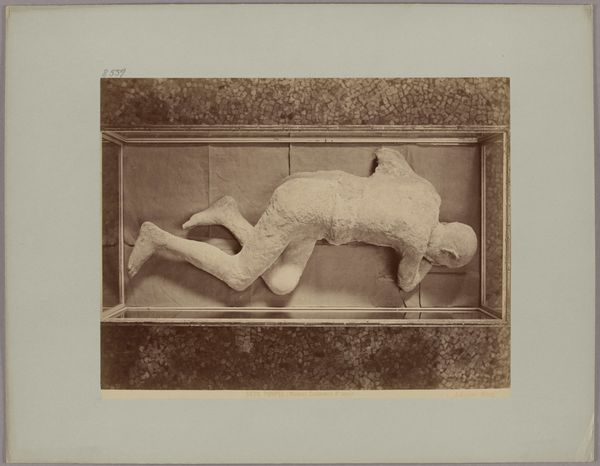
Grafmonument voor Engelbrecht II, graaf van Nassau-Dillenburg-Breda, 1504 1850 - 1930
0:00
0:00
anonymous
Rijksmuseum
photography, sculpture, gelatin-silver-print
#
portrait
#
film photography
#
archive photography
#
photography
#
historical photography
#
sculpture
#
gelatin-silver-print
#
history-painting
#
academic-art
#
realism
Dimensions: height 167 mm, width 211 mm
Copyright: Rijks Museum: Open Domain
Curator: The somber photograph before us, a gelatin silver print from between 1850 and 1930, captures the "Grafmonument voor Engelbrecht II, graaf van Nassau-Dillenburg-Breda, 1504," housed right here at the Rijksmuseum. Editor: Its pallid tonality evokes a funereal atmosphere, immediately drawing my eye to the recumbent figures on what appears to be a bi-level platform. The entire composition strikes me as remarkably static. Curator: That stillness reflects the nature of monuments themselves – static objects designed to convey the power and legacy of deceased figures. Considering Engelbrecht II's historical importance, his strategic military campaigns, we can see the sculpture, and the photo capturing it, is intended to immortalize that prowess. It certainly resonates with a narrative steeped in European nobility. Editor: Perhaps. Though the monument’s design leans heavily into the traditional symbolism of mourning—kneeling figures supporting the tomb and armor placed at the top. But its effectiveness is dependent on light and shadow in this picture. Consider how those elements shape our perception of its form. Look at how the stark contrasts in this photograph emphasizes the weight the kneeling figures bear. Curator: Indeed, it echoes artistic movements from a later date, and it would be fruitful to contemplate the historical context of this photography, especially considering issues surrounding historical representation and power structures during the 19th and early 20th centuries. Who had the privilege of documenting such artifacts? Whose perspectives were prioritized? Editor: The symmetry is undeniable. A clear hierarchy has been created here as well, which serves to direct the viewer's gaze toward particular focal points while establishing a precise spatial logic between all entities present here. It underscores my emphasis on its formal construction. Curator: That structured presentation itself speaks volumes about societal values. I believe we could further examine issues about cultural memory, social hierarchy, and the political meanings that funerary monuments held during the time they are originally from, and during the time the photograph was taken. Editor: By concentrating on structure and composition, we recognize how artists communicated fundamental ideas through visual form. Curator: And I contend that our analysis expands when we recognize this work as more than just surface appearances. Its place in art history, and what came after, speaks loudly in concert. Editor: An insightful contribution; viewing both artistic traditions alongside cultural dynamics.
Comments
No comments
Be the first to comment and join the conversation on the ultimate creative platform.
